Enjoy the captivating tale of Broadway’s remarkable transformation. From its humble origins in the early 1900s to its current status as an iconic theater district, this self-guided audio tour offers a riveting journey through the evolution of New York’s most celebrated entertainment hub. Uncover the fascinating interplay between exclusivity and democratization that has defined the theater-going experience over the decades. Explore the rich histories of landmark playhouses, each with its own captivating backstories and enduring legacies. As you navigate this audio exploration, prepare to be enthralled by the vibrant nightlife and backstage culture that have long been the heartbeat of Broadway.
Key Points
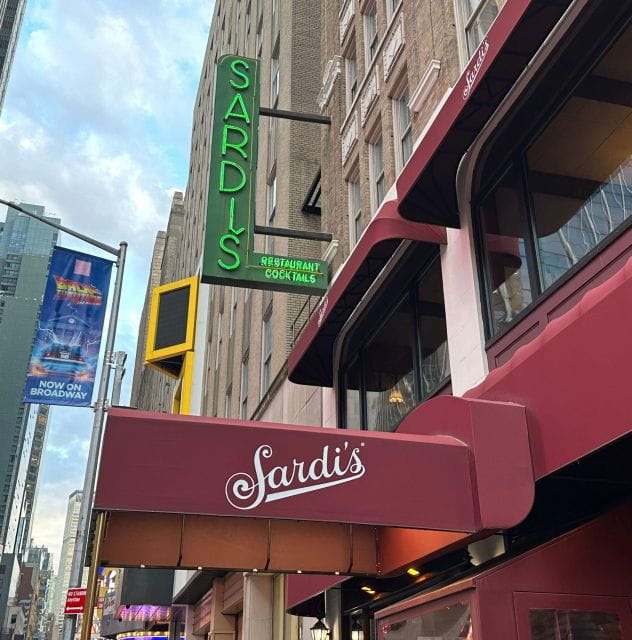
- Trace the transformation of Broadway from amusement parks and vaudeville to opulent theater palaces catering to the elite in the early 20th century.
- Explore how the rise of television in the 1950s democratized theater-going, making it more accessible to a diverse audience.
- Visit the iconic Nederlander Theatre and other legendary playhouses that showcase the rich history and evolution of Broadway.
- Discover the Belasco Theatre’s separate entrances, which reflected the shameful racial segregation practices of the time.
- Learn about the Majestic Theatre’s enduring legacy as the longtime home of the record-breaking musical, The Phantom of the Opera.
Broadway’s Origins in Early 1900s
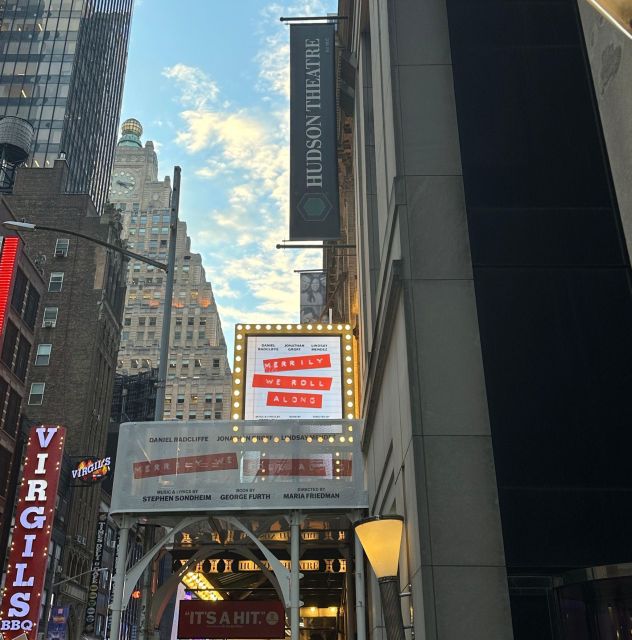
In the early 1900s, Broadway’s theaters became a popular form of entertainment, as the entertainment district arose around Times Square and the surrounding area in Manhattan.
Theaters began to replace earlier amusement parks and vaudeville venues, offering a more refined and exclusive experience. This was part of a broader cultural shift, as theater-going transitioned from a casual activity to one that was seen as an elite form of entertainment.
Audiences flocked to the bright lights and grand architecture of the new theaters, which became central to New York’s cultural identity.
This period laid the foundation for Broadway’s enduring reputation as the epicenter of American theater and live performance.
Loving the local insights? Here are more guided experiences we recommend in New York City
Transition to Exclusive Theater-Going
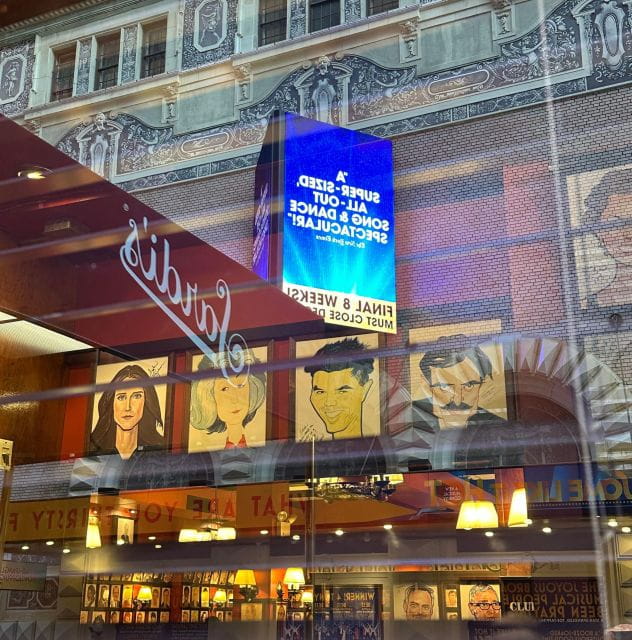
Transitioning from a casual affair, theater-going in the early 20th century became an exclusive social event, attracting the upper echelons of society. Fancy attire and reserved seating signaled one’s status, while the theater experience itself evolved into a refined, elevated affair. As the wealthy flocked to see the latest productions, the theater district transformed, with ornate, lavish playhouses replacing simpler venues. This shift reflected a broader cultural change, where the arts were increasingly viewed as a marker of sophistication and prestige.
| Year | Ticket Price | Venue Type | Audience Demographic |
|---|---|---|---|
| 1900 | $0.25 | Vaudeville House | Working Class |
| 1910 | $0.50 | Broadway Playhouse | Middle Class |
| 1920 | $1.00 | Grand Broadway Theatre | Upper Class |
| 1930 | $2.00 | Opulent Broadway Palace | High Society |
| 1940 | $3.00 | Exclusive Broadway Icon | Elite |
Impact of Television in 1950s
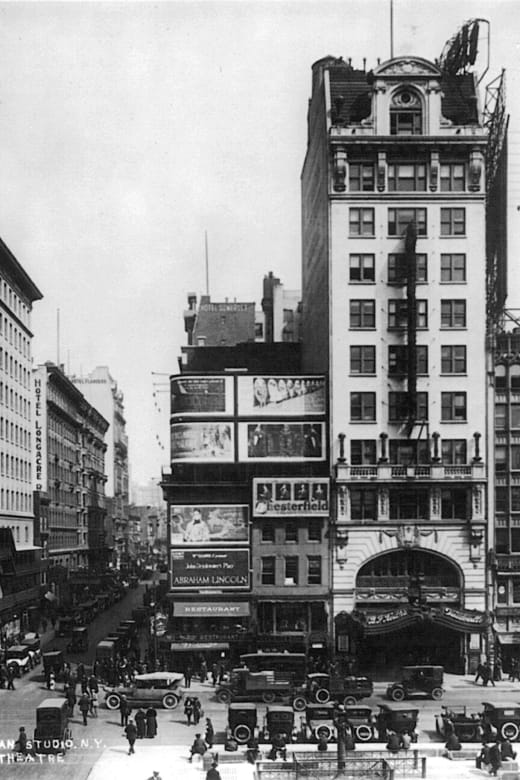
Television’s arrival in the 1950s dramatically reshaped the theater-going experience, ushering in a more casual and accessible era.
Whereas once the theater had been the domain of the elite, TV made entertainment more widely available in the comfort of people’s homes, disrupting the exclusive allure of live performances.
This shift gave rise to a new generation of theatergoers, drawn from a broader cross-section of society, who sought a more relaxed, affordable night out.
No longer did the theater evoke an air of exclusivity and refinement. Instead, it became a more democratized space, shedding its formal trappings and welcoming a diverse audience seeking an entertaining escape from the everyday.
Theaters and Landmarks on Tour
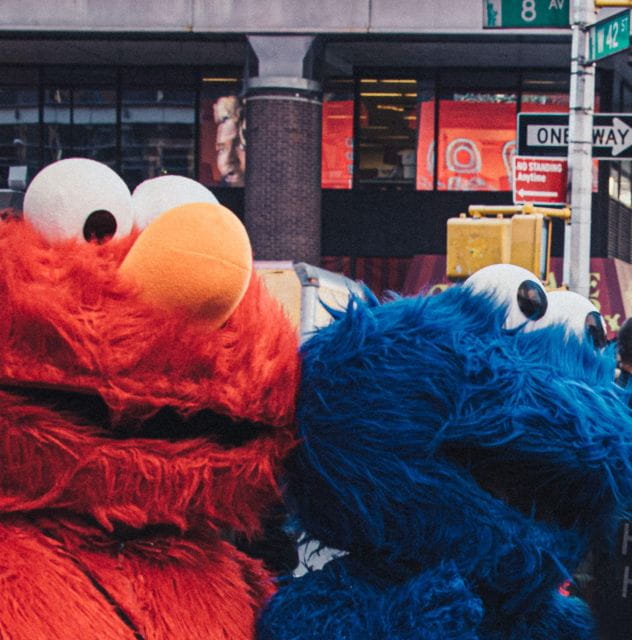
The tour begins at the Nederlander Theatre, one of Broadway‘s iconic playhouses, before winding its way past over 40 legendary theatres nestled throughout Manhattan’s midtown district.
Along the way, you’ll marvel at the Belasco Theatre, which once featured separate upstairs and downstairs entrances to reflect the racial segregation of its era.
The tour also highlights the Majestic Theatre, home to the record-breaking run of The Phantom of the Opera for over 35 years.
These historic venues not only showcase the evolution of Broadway, but also tell the story of the city’s rich cultural heritage and the enduring allure of live theater.
Nederlander Theatre and Playhouses
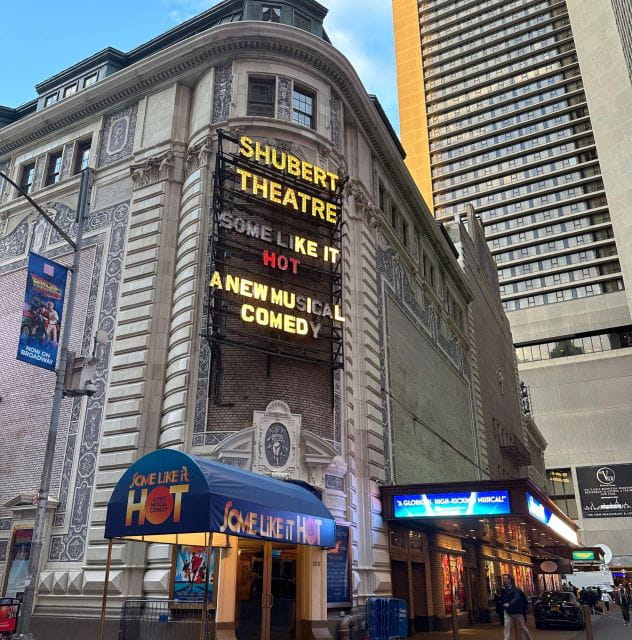
The tour kicks off at the iconic Nederlander Theatre, one of Broadway’s legendary playhouses that has hosted countless acclaimed productions over the decades.
This historic venue sets the stage for exploring the vibrant theater district, as visitors wander past over 40 more acclaimed playhouses that dot the midtown Manhattan landscape.
From the ornate Belasco Theatre, with its separate upstairs and downstairs entrances reflecting the era’s racial segregation, to the Majestic Theatre, home to the record-breaking run of The Phantom of the Opera for over 35 years, these theaters embody the rich history and evolution of Broadway.
Each one tells a unique story, transporting audiences to a bygone era of theatrical grandeur and excitement.
Here are more great tours and experiences we've reviewed in New York City
- New York: Must-Sees In-App Audio Tour on Your Phone (ENG)
- Brooklyn Bridge Self-guided Bike Tour App – Audio + Written
- NYC: Midtown Manhattan Self-Guided Walking Tour
- NYC: Midtown Manhattan and Brooklyn Self-Guided Audio Tour
- History of Lower Manhattan In App Audio Tour
- New York: Crimes & Ghosts Audio Tour on Your Phone (ENG)
Belasco Theatre’s Racial Segregation
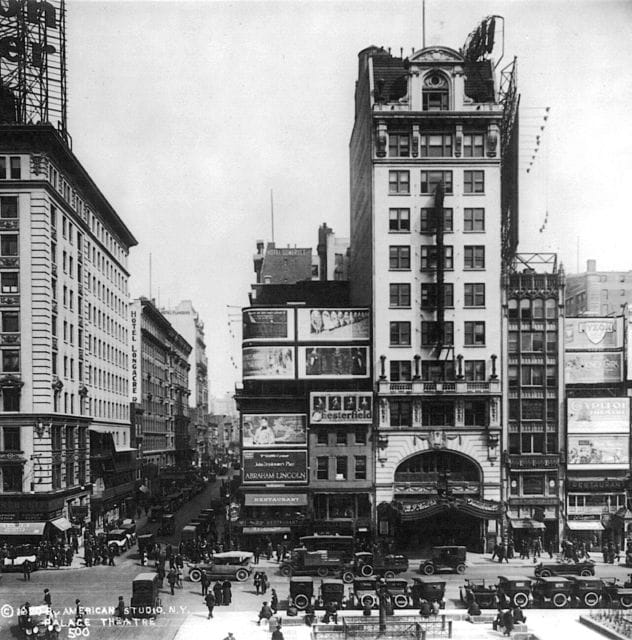
While the Nederlander Theatre and other Broadway playhouses welcomed all audiences, the Belasco Theatre’s separate upstairs and downstairs entrances reflected the unfortunate racial segregation of the era, effectively dividing patrons by the color of their skin. This divisive practice was a stark contrast to the theater’s opulent interior, designed to transport audiences to a world of glamour and excitement. The separate entrances created a clear divide, with the upstairs reserved for white patrons and the downstairs for those of color. This segregation was a shameful reminder of the deep-rooted prejudices that plagued society at the time, but the Belasco’s legacy as a landmark of Broadway endures.
| Upstairs Entrance | Downstairs Entrance |
|---|---|
| Reserved for white patrons | Reserved for patrons of color |
| Ornate, grand design | Plain, functional design |
Majestic Theatre’s Phantom Legacy
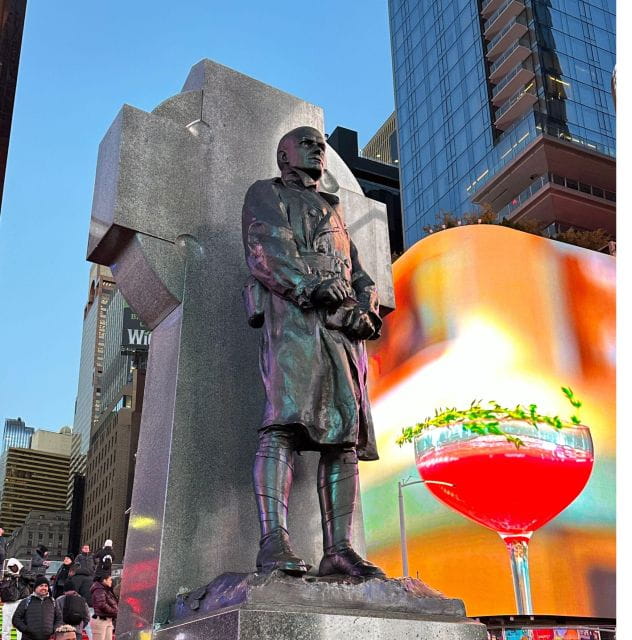
Nestled in the heart of Manhattan’s theater district, the Majestic Theatre has long been a beacon for Broadway enthusiasts, its stage captivating audiences for over three and a half decades with the record-breaking run of the iconic musical ‘The Phantom of the Opera‘.
Since its premiere in 1988, the timeless tale of the disfigured musical genius and his love for a young soprano has enchanted millions, making it the longest-running Broadway show in history.
The grand, opulent Majestic Theatre, with its ornate chandelier and opulent décor, has become synonymous with the Phantom’s haunting melodies and the magic of live theater.
It’s a testament to the enduring power of this musical masterpiece and the enduring allure of Broadway’s most iconic stage.
Nightlife and Hangouts on Broadway
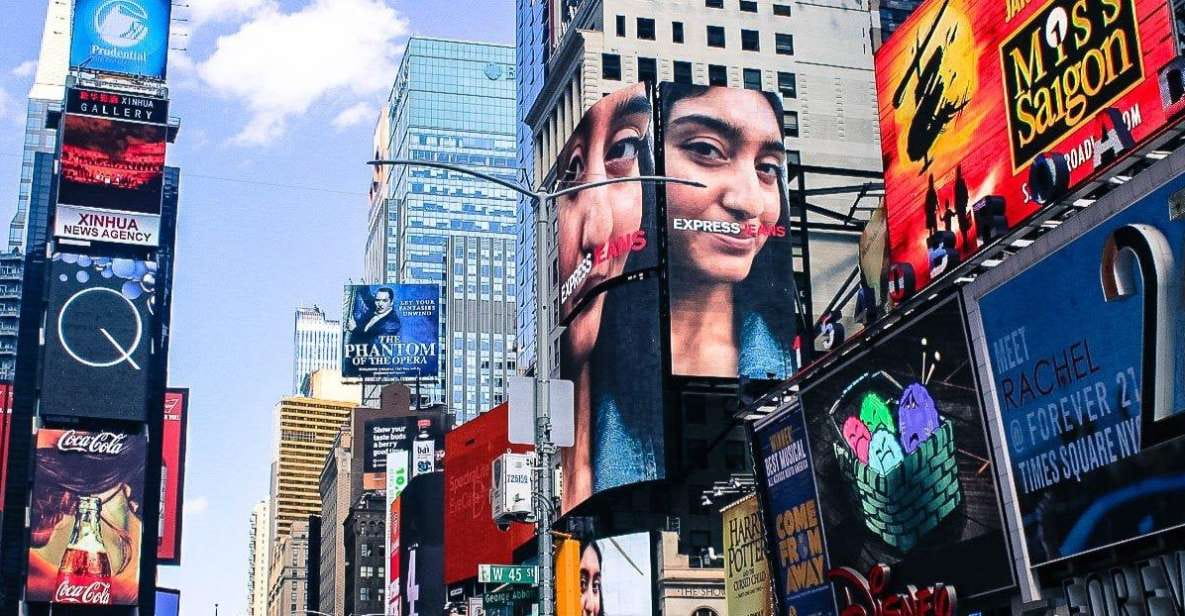
Alongside the iconic theaters that line Broadway, a vibrant nightlife scene has long captivated visitors and locals alike, with legendary hangouts like Studio 54 emblematic of the era’s lively energy and glamour.
This legendary nightclub, which opened in the 1970s, became a symbol of the raucous, decadent spirit of the times, attracting a who’s who of celebrities, artists, and socialites.
Beyond the dance floor, the tour also explores Sardi’s, a renowned hangout for Broadway’s actors, writers, and producers, where the walls are adorned with caricatures of the industry’s biggest names.
These storied venues offer a glimpse into the backstage world and off-stage culture that has defined the Broadway experience for generations.
Frequently Asked Questions
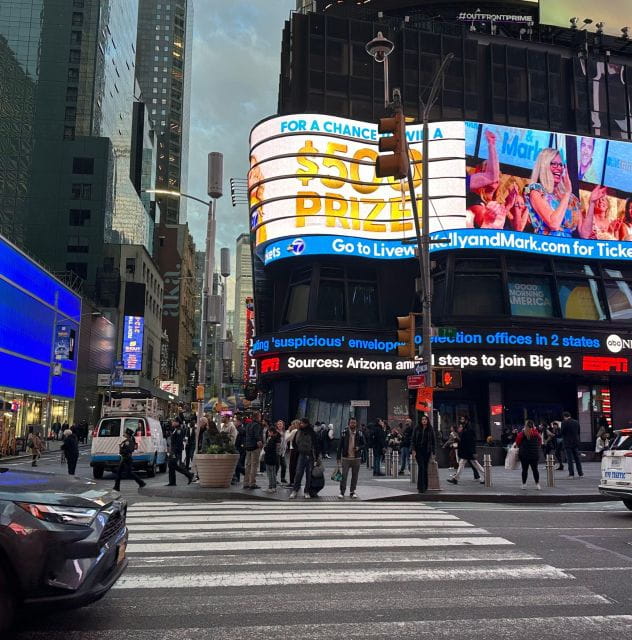
How Do I Access the Tour on My Mobile Device?
To access the tour on a mobile device, customers download the VoiceMap app for Android or iOS. They’ll then have lifetime access to the self-guided audio tour, which can be enjoyed offline with just a charged smartphone and headphones.
What Languages Is the Tour Available In?
The tour is currently available in English only. Users can access the self-guided audio tour through the VoiceMap app for Android and iOS devices, providing lifetime access to the content in the chosen language.
Are There Any Entrance Fees or Tickets Included?
The tour does not include any entrance fees or tickets. Participants will need to bring their own charged smartphone and headphones to access the self-guided audio tour through the VoiceMap app, which provides offline access to the content.
How Long Does the Tour Typically Take to Complete?
The tour typically takes about an hour to complete. It’s a self-guided audio experience that allows you to explore Broadway and the theater district at your own pace.
Can I Pause and Resume the Tour at Any Point?
Yes, users can pause and resume the tour at any point. The self-guided audio tour provides lifetime access, allowing listeners to explore Broadway and the theater district at their own pace using the VoiceMap app on their smartphone.
Recap
The Broadway self-guided audio tour transports listeners through the evolution of New York’s iconic theater district.
From its beginnings as a casual activity to an elite form of entertainment, the tour delves into the district’s rich history, landmark playhouses, and vibrant culture.
Listeners will emerge with a captivating glimpse into the past, present, and enduring allure of Broadway‘s timeless theatrical experience.
More Guided Tours in New York City
More Tours in New York City
More Tour Reviews in New York City
Not for you? Here's more things to do in New York City we have recnetly reviewed
- NYC: Brooklyn Walking Tour, Ferry, Pizza & Iconic Bridge
- CENTRAL PARK TOUR,Central park sightseeing tours.Flexible Tours
- Central Park Pedicab Rides
- New York Tours and New York City Sightseeing Tours.Flexible Tours
- 9/11 Memorial & Museum Ticket & In-app Audio Tour
- Sugar-Hill North Walking Tour
- Manhattan: Shared Transfer to or From Laguardia Airport
- NYC: Long Island Sommelier-Guided Wine Tasting Tour
- NYC: Private Walking Tour of Donald Trump Buildings
- NYC: Guided Wall Street, Little Italy & China Town Tour
- Brooklyn: The Bridge, DUMBO, & Brooklyn Heights Best of Tour
- From New York City: Niagara Falls Full-Day Bus Tour
